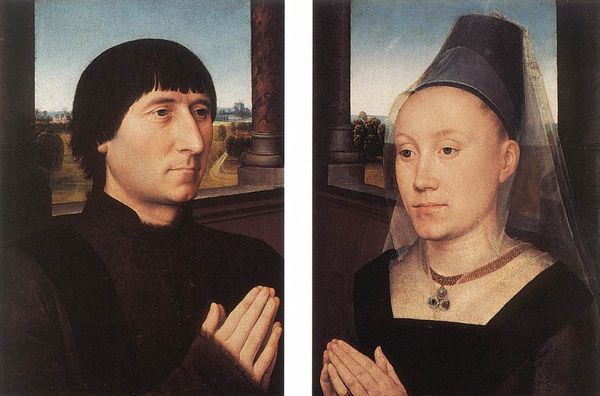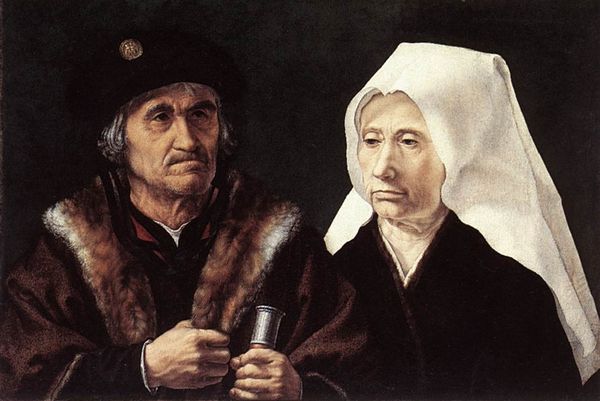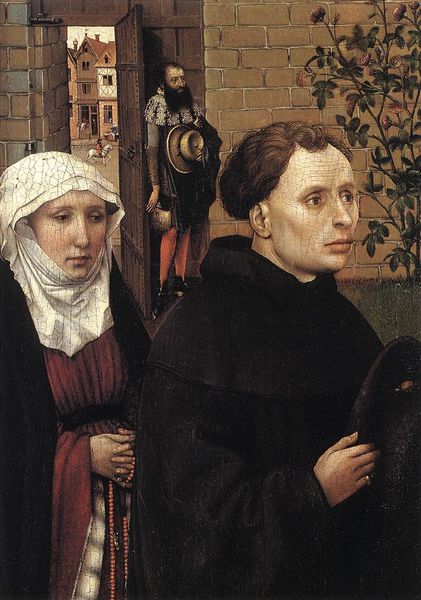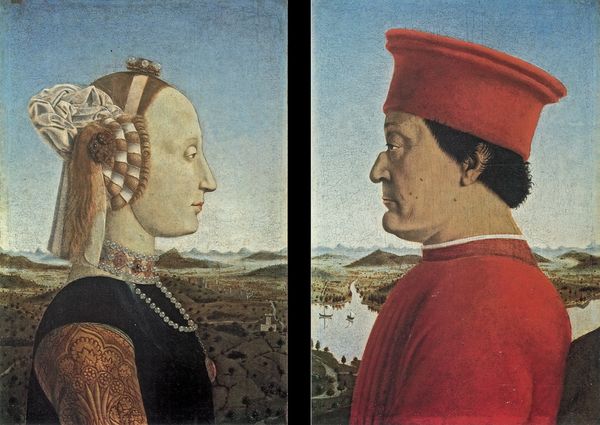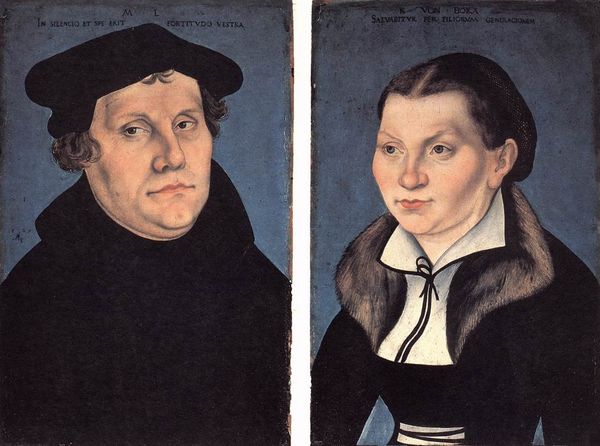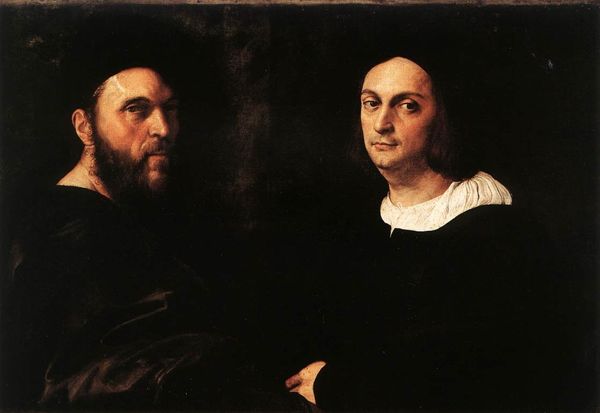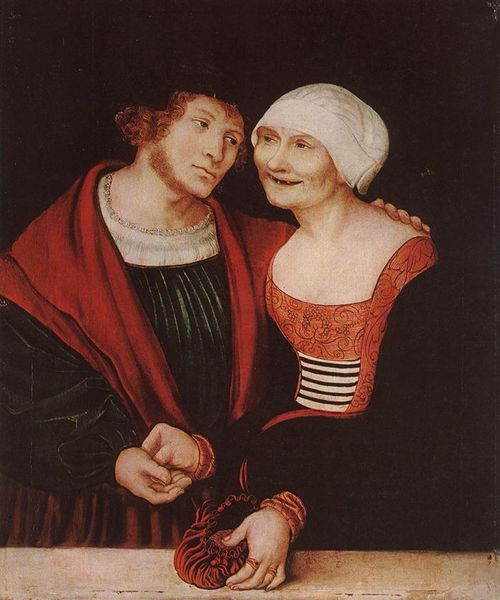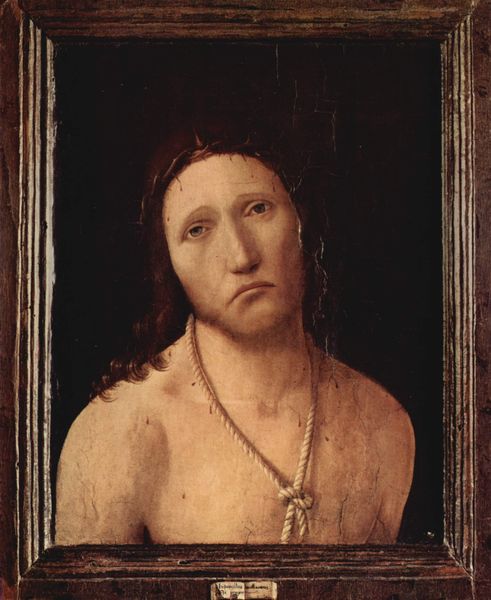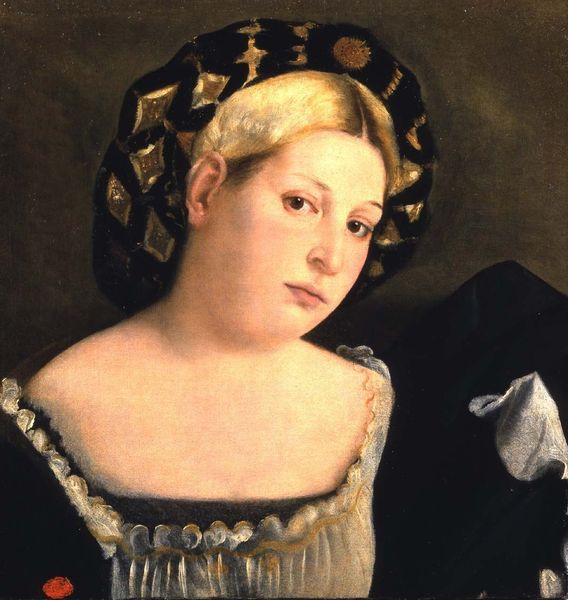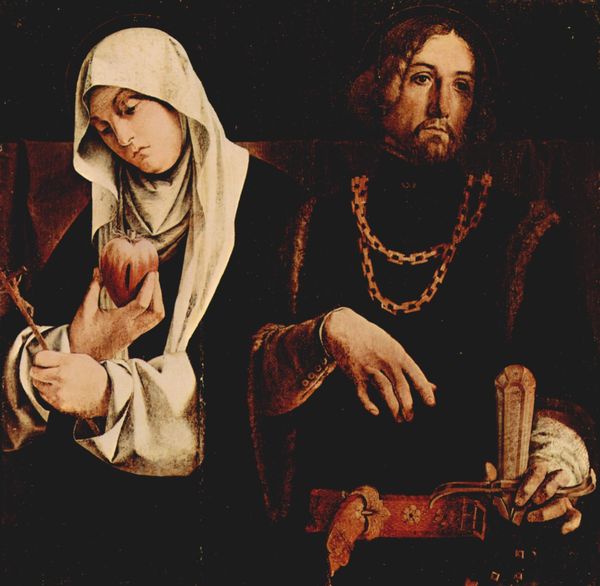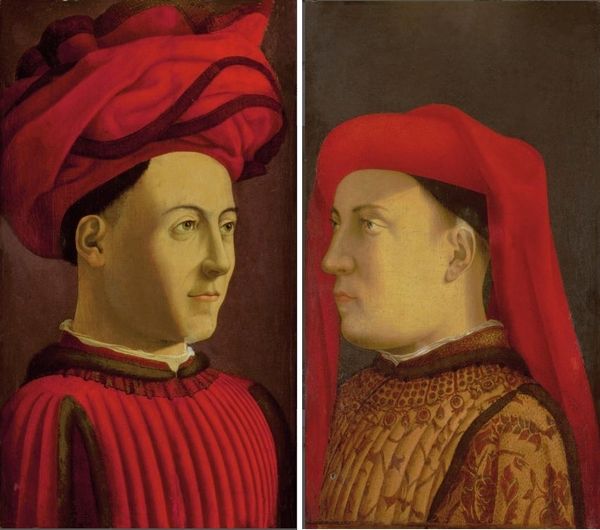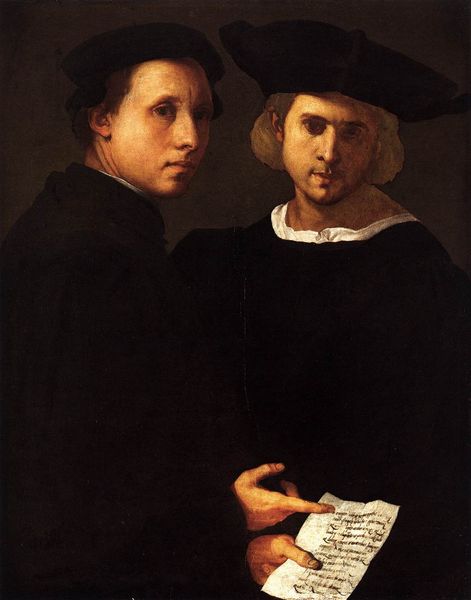
panel, painting, oil-paint
#
portrait
#
panel
#
painting
#
oil-paint
#
portrait subject
#
group-portraits
#
history-painting
#
northern-renaissance
#
portrait art
Dimensions: 23.5 x 70 cm
Copyright: Public domain
Curator: Here we have the wings of a triptych, painted in 1515 by Mabuse, a prominent figure in the Northern Renaissance. Oil on panel, these portraits are housed right here in the Royal Museums of Fine Arts in Brussels. Editor: The solemn stillness hits you first, doesn't it? Two panels, two separate worlds almost, yet tethered by some unseen force. She is ethereal, hands clasped in prayer, while he, across the divide, has this really grounded gaze... almost unsettling. Curator: The separation emphasizes the conventions of Renaissance portraiture. Commissioned portraits like these reinforced social status and morality through the depiction of religious devotion. Each pose is deliberate, conveying their individual role within their marriage, and their relationship with the divine. Editor: I see it. She's enveloped in this sort of soft, reverent glow. He's sharper, the textures of his clothes more prominent. I imagine they were quite a couple, existing, as many do, in different planes of existence, orbiting one another in an elegant dance. Curator: The triptych, when fully assembled, probably had a central panel depicting a religious scene. Removing these figures to the sides allows for an intimate, individualized form of devotion, in alignment with religious movements of the period, but the removal of the center painting removes much of what the paintings were originally intended to symbolize. Editor: Absolutely. And look at their hands – hers pressed together, his gesturing above an open book. It’s like they’re conductors leading separate but interconnected symphonies of faith. The man is less a worshiper than the women, appearing more preoccupied. Curator: Mabuse’s technique here is remarkable, considering his innovative approach to Northern Renaissance ideals and their intersection with religious portraiture. The figures and textures demonstrate his eye for detail and an understanding of both naturalism and formal presentation, something new for the era in Belgium. Editor: What strikes me most is the lasting power of these silent observers. We can still project our narratives, our hopes and our biases onto them, centuries later. How beautifully maddening! Curator: Indeed. The Wings offer an intriguing lens through which to consider not just art history, but the evolving dynamics of class, religion, and the very concept of self. Editor: It’s fascinating how this glimpse into the past ignites such an active dialogue within ourselves.
Comments
No comments
Be the first to comment and join the conversation on the ultimate creative platform.
